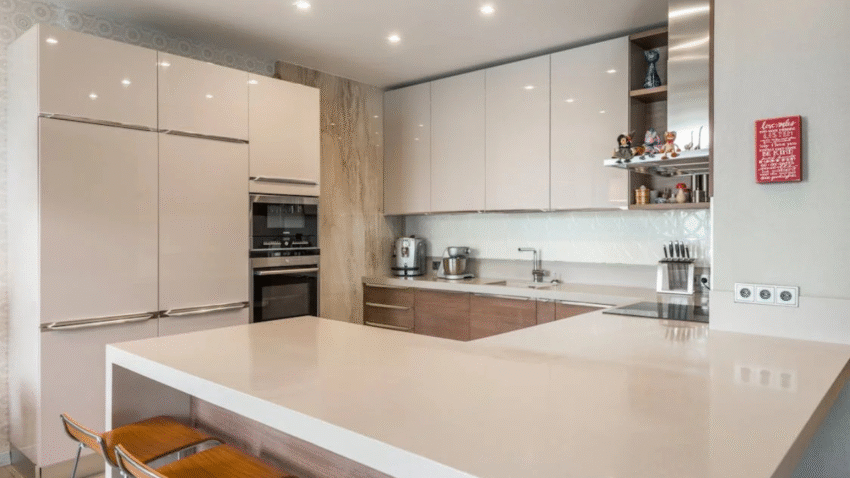Introduction
Thinking about switching to cast iron but not sure how to use it properly? You’re not alone. In this complete guide, you’ll learn how to cook with cast iron skillets—safely, effectively, and confidently. Whether you’re searing steaks or baking cornbread, mastering cast iron cooking can level up your kitchen game and make your meals taste even better.
Why Cooking with Cast Iron Skillets Matters in the Kitchen
Cast iron skillets are more than just a retro trend—they’re a powerhouse tool in any kitchen. Known for their durability, versatility, and ability to retain and distribute heat evenly, these pans can handle everything from stovetop frying to oven roasting.
Cooking with cast iron supports:
- Better sears and caramelization
- Non-stick performance when seasoned properly
- One-pan meals that go from stove to oven
- A healthier kitchen, since no chemical coatings are involved
Plus, with proper care, a cast iron skillet can last a lifetime (and then some), becoming better with age. Learning how to cook with it effectively can transform everyday dishes into restaurant-quality meals.
Step-by-Step Guide to Cooking with Cast Iron
1. Preheat the Skillet Properly
Place your cast iron skillet on the stove and heat it slowly over medium heat for 5–10 minutes before adding food. Cast iron takes longer to heat than aluminum or stainless steel, but once hot, it stays hot.
Kitchen Tip: Always preheat the pan before adding oil or ingredients. Cold cast iron can cause food to stick.
2. Add a Thin Layer of Oil
Once heated, add a high smoke-point oil like canola, avocado, or grapeseed oil. Swirl it around to coat the surface evenly. This prevents sticking and enhances flavor.
Reminder: Avoid extra virgin olive oil for high-heat cooking—it smokes too early and can leave a burnt taste.
3. Place Food Gently into the Skillet
Let meats or vegetables come to room temperature before adding them. Placing cold food into a hot pan can cause sticking and lower the skillet’s temperature too quickly.
Pro Tip: For a perfect sear, avoid overcrowding. Cook in batches if necessary to allow proper browning.
4. Let the Food Cook Undisturbed
Once your food is in the pan, let it cook without moving it around too soon. This allows a crust to form, naturally releasing the food from the pan.
Example: Searing a steak? Let it sit for 3–5 minutes before flipping to get that beautiful golden-brown crust.
5. Use Oven-Safe Recipes
One of the best features of cast iron is its ability to transition from stovetop to oven. Use it for dishes like:
- Frittatas
- Roasted vegetables
- Skillet pizzas
- Cornbread
- Pan-seared meats finished in the oven
Tip: Always use oven mitts when handling cast iron. Even the handle gets extremely hot.
6. Let the Skillet Cool Before Cleaning
After cooking, allow your skillet to cool slightly before cleaning. Never run cold water over a hot skillet—it can cause it to crack.
Need Help Cleaning? Check out our guide: How to Clean a Cast Iron Skillet Correctly.
Common Mistakes to Avoid
Mistake 1: Cooking Acidic Foods in a New Skillet
Solution: Wait until your skillet is well-seasoned before cooking tomato sauces, vinegar-based dishes, or citrus-heavy meals. Acid can strip the seasoning.
Mistake 2: Not Preheating the Pan
Solution: Always preheat for even cooking and better non-stick performance. Cold cast iron causes sticking and uneven results.
Mistake 3: Using Too Much Oil
Solution: A little goes a long way. Too much oil can make food greasy and leave a sticky residue on the skillet.
Mistake 4: Using Soap Every Time You Clean
Solution: You don’t need to scrub with soap after every use. Often, a quick wipe or scrub with hot water is enough to clean the skillet without harming the seasoning.
Mistake 5: Storing Food in the Skillet
Solution: Don’t leave leftovers in your cast iron pan. The moisture and acids can damage the seasoning and leave metallic flavors in the food.
Extra Tips & Kitchen Hacks
Tip 1: Start with Simple Recipes
If you’re new to cast iron, start with forgiving recipes like sautéed veggies, grilled cheese sandwiches, or skillet potatoes before moving to delicate dishes like eggs or pancakes.
Tip 2: Use Cast Iron on the Grill or Campfire
Cast iron isn’t just for the kitchen—it excels over open flames. It holds heat beautifully outdoors, making it perfect for camping trips or backyard grilling.
Tip 3: Reseason Regularly
Even a well-seasoned skillet can benefit from a refresh. If food starts sticking or the surface looks dull, apply a thin layer of oil and bake it in the oven at 400°F (200°C) for an hour.
Bonus Hack: Wipe your skillet with a bit of oil after every use to maintain seasoning and prevent rust.
Conclusion
Cooking with cast iron skillets can feel intimidating at first, but with just a little know-how, it becomes one of the most rewarding tools in your kitchen arsenal. Preheat properly, use the right oils, don’t rush the cooking process, and take care of your skillet—and it will reward you with exceptional meals and long-term value.
Whether you’re pan-searing, baking, or sautéing, this timeless cookware elevates your dishes with unmatched flavor and texture. Bookmark this guide and return whenever you need a refresher or want to explore new recipes using cast iron.
